Top 15 Things to Do in Jerusalem
Jerusalem is an endless treasure trove of fascinating sites and attractions. A “top” list cannot do the City of Gold justice but to get you started here are the absolute must-see sites of Jerusalem.
City of David excavations, Jerusalem, Israel. Photo credit: © Shutterstock
1. Old City
Many of the individual top attractions of Jerusalem are within the Old City walls but in addition to the Old City highlights, there are many fascinating sites, narrow alleys, markets, and churches to discover. Wandering through the Old City is perhaps the best way to discover the Old City.
Try following the Via Dolorosa, the route Jesus took carrying his cross to his crucifixion in Calvary where the Holy Sepulchre now stands. Shop for authentic souvenirs in the Muslim Quarter market and see the Armenian ceramics in the Armenian Quarter. The Old City walls were constructed under the Ottoman rule in the 16th century and it is possible to walk along the ramparts.
In the 9th century, the city was divided into the four quarters of Armenian, Christian, Muslim, and Jewish neighborhoods. The Old City has drawn people of all faiths for thousands of years. It was here that Jesus was crucified, that the Jewish Temple stood, and where Muhammad traveled on his Night Journey. The Old City sites include Temple Mount, the Western Wall, Holy Sepulchre, and the Dome of the Rock; the Old City is a UNESCO World Heritage site.
Church of the Holy Sepulchre, Jerusalem. Photo by Adam Kring on Unsplash
2. Church of the Holy Sepulchre
The Church of the Resurrection in the Old City Christian Quarter is located on the site of Calvary (Golgotha) where Jesus was crucified, buried, and resurrected. The Via Dolorosa leads to the church where the last four Stations of the Cross are located representing the final stages of Christ’s Passion.
The church was completed in 326AD (but rebuilt, repaired, extended, and renovated several times) and since then has been a pilgrimage site for Christians from across the globe. Much of the church structure we see today dates back to the Crusaders who rebuilt the church. The building is shared by several Christian denominations each with its own chapels within the church.
Highlights of a visit to the church include the Armenian, Greek Orthodox, and Ethiopian Orthodox chapels; Calvary; the Chapel of the Nailing of the Cross; the Chapel of Adam; the mosaic depicting Christ’s body being prepared for burial; the Stone of Anointing, where Jesus’ body was laid to be prepared for burial and the Rotund, a massive dome above the Chapel of Aedicule which holds the Holy Sepulchre and the Angel’s Stone, a fragment of the stone which sealed Jesus’ tomb. The extremely beautiful and ornate church is one of the largest in the world.
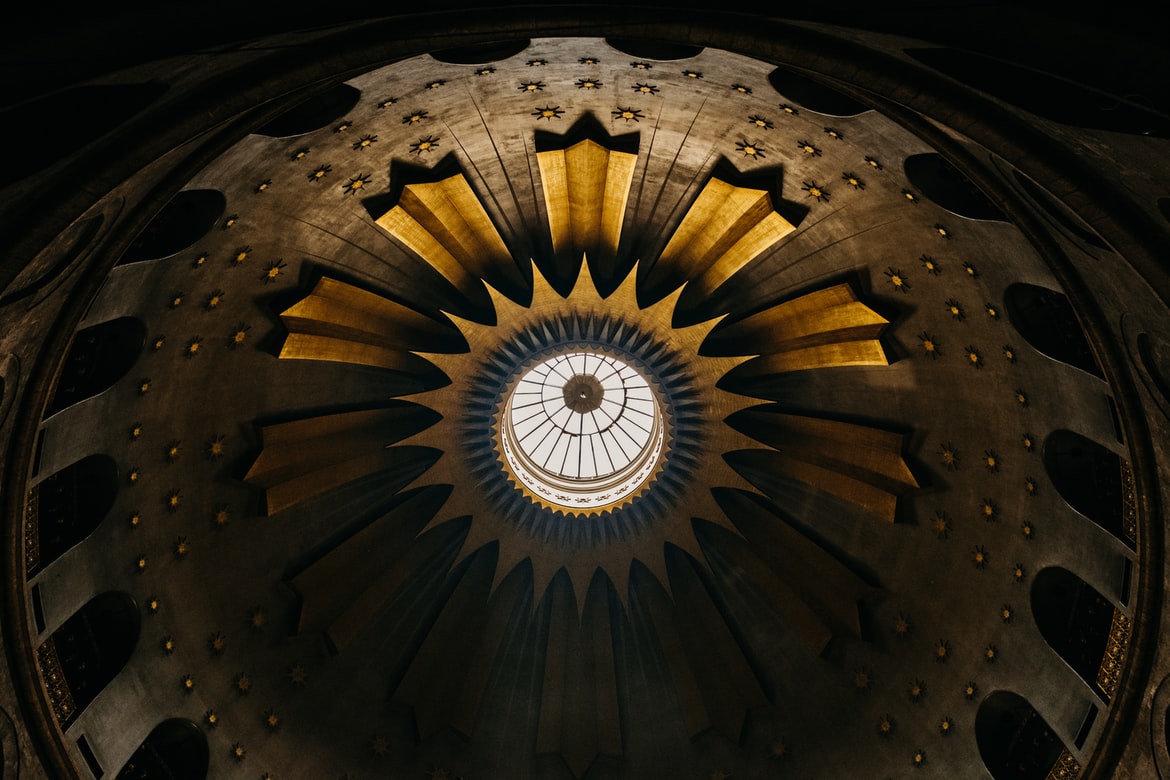
Dome of the Church of the Holy Sepulchre, Jerusalem. Photo by Adam Kring on Unsplash
3. Wailing Wall
The Kotel, Western Wall, or Wailing Wall is the last remaining part of the ancient Jewish Second Temple which stood on Temple Mount until its destruction in c.70AD. The small stretch of wall which we call the Wailing Wall was part of the retaining walls of the temple constructed by Herod the Great in c.19BC.
The temple on Temple Mount was the most sacred site in Judaism and following its destruction, the remaining wall became the most sacred site in the Jewish world. Looking at the wall you can see the large stone blocks on the lower section which date back to the original Herodian wall, smaller blocks in the middle section added during the Umayyad Era, and the smaller blocks on the top of the wall added during the Ottoman Era.
The entire wall would have measured 488 meters long. The portion referred to as the Wailing Wall faces a large plaza in the Jewish Quarter while the rest of the wall is hidden behind other structures in the Muslim Quarter. There is a small section (8 meters) called the Little Western Wall still accessible within a tunnel.
Jews gather throughout the day and night to pray at the Western Wall, it is the local synagogue for those Jews who live close by. It is a tradition to place a prayer note (with your private message to God) in between the stones of the wall. For a unique experience, you can take a tour of the Kotel Tunnels beneath the ground along the excavated hidden layers of the walls.
You can join the hour-long tour from the Visitors Center on the Western Wall Plaza. Another interesting attraction alongside the Western Wall is the Generation Center which takes you on a journey following the existence of the Jewish people and giving you a unique view of the Western Wall.
The Wailing Wall, Jerusalem. Photo by Reiseuhu on Unsplash
4. Temple Mount
Har HaBayit, HaMoriya, Haram al-Sharif, or Temple Mount is the most sacred site in Jerusalem for Jews and Muslims. The Jews value Temple Mount as the former site of their Holy Temple which was destroyed in c.70AD while the Muslims value the site because of several religious structures which stand here and the belief that Muhammad traveled here in his Night Journey as told in the Koran (although Jerusalem is not mentioned by name).
Today entrance to the Temple Mount is monitored closely to avoid conflict between Jews and Arabs and it is usually only possible for non-Muslims to visit as part of a guided tour. Temple Mount is the site of the Dome of the Rock (the Noble Sanctuary with its famous golden dome and colorful mosaics), the al-Aqsa Mosque (thought to be the “Farthest Mosque” referred to in the Koran, it is the 3rd holiest Islamic site in the world) and the Dome of the Chain (an Ummayads era prayer house with a domed hexagonal structure and open arches).
The mount is accessed through four gates, the paved trapezium-shaped area referred to as Temple Mount is in the eastern section of the Old City; it covers 37 acres and measures 488 meters by 470 meters by 315 meters by 280 meters. On the southern section of the western flank is the Western Wall where Jews worship on the other side of the wall.
Dome of the Rock through the archway, Temple Mount, Jerusalem. Photo by Jorge Fernández Salas on Unsplash
5. Mahane Yehuda Market
250 market stalls and stores fill the lanes of Jerusalem’s most famous “shuk” or market. The market can be found between Jaffa Road, Agrippas Street, Beit Yaakov Street, and Kiach Street. There is a covered section down Eitz Chaim Street and an open-air market along Mahane Yehuda Street. Smaller streets bisect these two main streets each heavily ladened with food, produce, and goods.
The Mahane Yehuda Market is well known for its many eateries, here you can find hidden gems, restaurants that count among the best in the city. The market is known for its lively atmosphere, frequent street entertainers, fresh produce, regular special events, and colorful dynamic atmosphere. Try sampling the roasted nuts, halva, pickles, olives, fresh baked goods and pick up some cheap household goods and casual clothing. For a slice of Israeli society visit Mahane Yehuda!
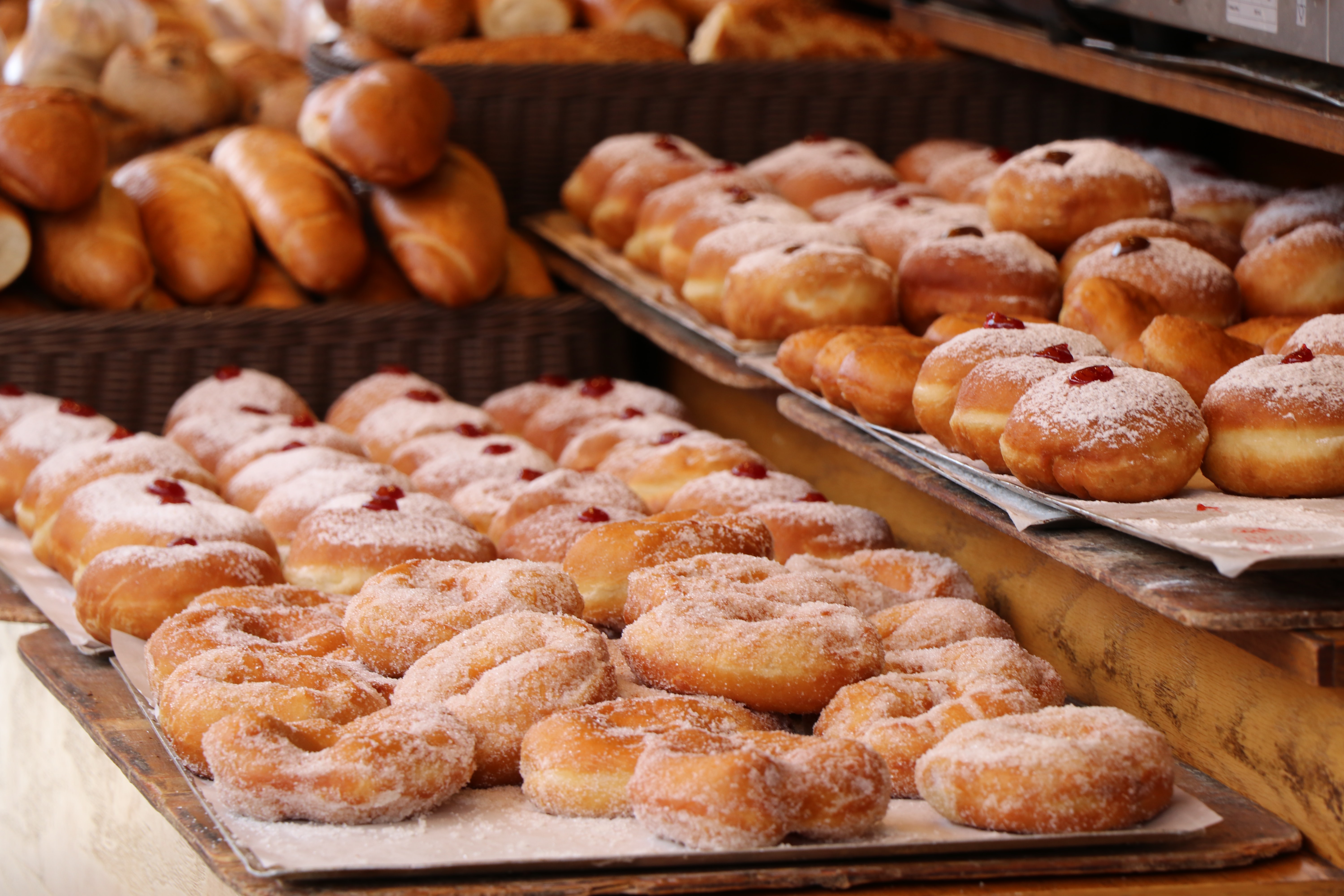
Doughnuts for Hanukkah in Mahane Yehuda Market, Jerusalem. Photo by Elisheva Gohar on Unsplash
6. Yad Vashem
This museum is Israel’s official memorial to those who lost their lives in the World War II Holocaust. The Holocaust History Museum Yad Vashem is located on Mount Herzl next to the Jerusalem Forest; the expansive grounds have several memorials including the Children’s Memorial, the Hall of Remembrance, and the Garden of the Righteous Among the Nations which commemorates non-Jewish heroes who helped hide or rescue Jews from certain death.
The main museum building has a unique triangular or prism shape constructed out of concrete which cuts through the landscape and after passing through the exhibits visitors reach an opening overlooking the valley forests. A skylight extends through the entire “triangle” letting in natural light.
The museum holds video testimonials featuring Holocaust survivors; a Hall of Names featuring the photos of 600 Holocaust victims lining a cone shape which goes both up and down to where there is a pool of water. The museum exhibits include authentic artifacts, photographs, documents, personal possessions, and the world’s largest collection of artwork created by Jews and other victims during WWII. Yad Vashem is the second most visited site in Israel after the Wailing Wall and admission is free.
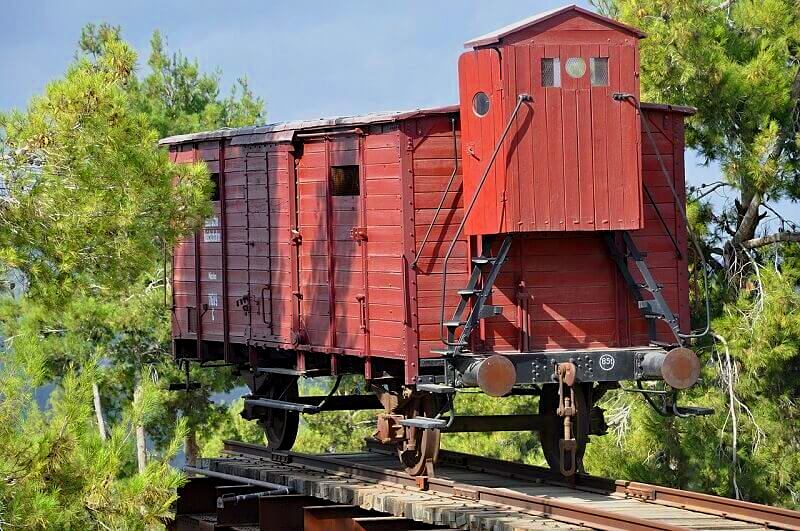
Memorial to the Deportees (Wagon or cattle car monument) at Yad Vashem in Jerusalem.Photo credit: © Shutterstock
7. Ein KeremIn southwest Jerusalem, just behind the Old City lies this picturesque ancient village which is now a neighborhood of Jerusalem. It is believed that John the Baptist was born here and many churches and monasteries have been established here for that reason. In addition to enjoying the many quaint coffee shops, specialty restaurants, lush greenery, and the traditional courtyard homes of Ein Kerem you can visit several sites.
There are two Ein Kerem Churches of St. John the Baptist, one is a Catholic church constructed on the remains of former Byzantine and Crusader churches where you can see part of the surviving mosaic floor. The other church belongs to the Eastern Orthodox church and was built in 1894. The Church of the Visitation is thought to be built on the site of John the Baptist’s parent’s home.
The present church was designed by well-known architect Antonio Barluzzi who also designed the Church of All Nations on the Mount of Olives. Other sites in Ein Kerem include Les Soeurs de Notre-Dame de Sion; the Russian Orthodox Gorny Convent and Mary’s Spring believed to be where Mary drank water and where Mary and Elizabeth met. Alongside the spring (which is actually the end of an ancient aqueduct) is a mosque and school.
The historical streets of Ein Karem, Jerusalem, Israel. Photo by Laura Siegal on Unsplash
8. David's Tower
It is hard to miss the sight of David’s Tower next to the Jaffa Gate of the Old City. The medieval citadel actually has no connection with King David; the present structure stands on the site of earlier Hasmonean, Herodian, and Christian fortifications. Herod altered the original Hasmonean fort towers and the northeastern tower (the Tower of Phasael) became known as the Tower of David by the Byzantine Christians who mistook it for the Palace of King David.
The Turkish Muslim leaders also thought this was King David’s palace (1187) and the Mamluks made the same mistake destroying and rebuilding the citadel. During the Turkish Ottoman era the citadel was rebuilt and became a garrison and mosque; the minaret that is today referred to as the Tower of David dates back to the 16th century Ottoman Era.
Under the British Mandate (1917-1948) the citadel was restored and used for cultural events and following the 1948 Arab-Israeli War the citadel became the property of the Arab Legion and was once again used as a military fortress until the Israeli victory in 1967. Today the Tower of David houses a museum and is used for exhibitions, concerts, and cultural events.
The museum is housed in the guardrooms of the original citadel and in the courtyard, you can see archaeological ruins. The museum uses diverse state-of-the-art techniques to tell the story of Jerusalem in chronological order from 3200BC to the 20th century AD. The Tower of David is the site of Jerusalem’s Night Spectacular sound and light show “Babylon Exile.” Sophisticated special effects are used to project images on the surrounding ancient stones which come alive with images of the past.
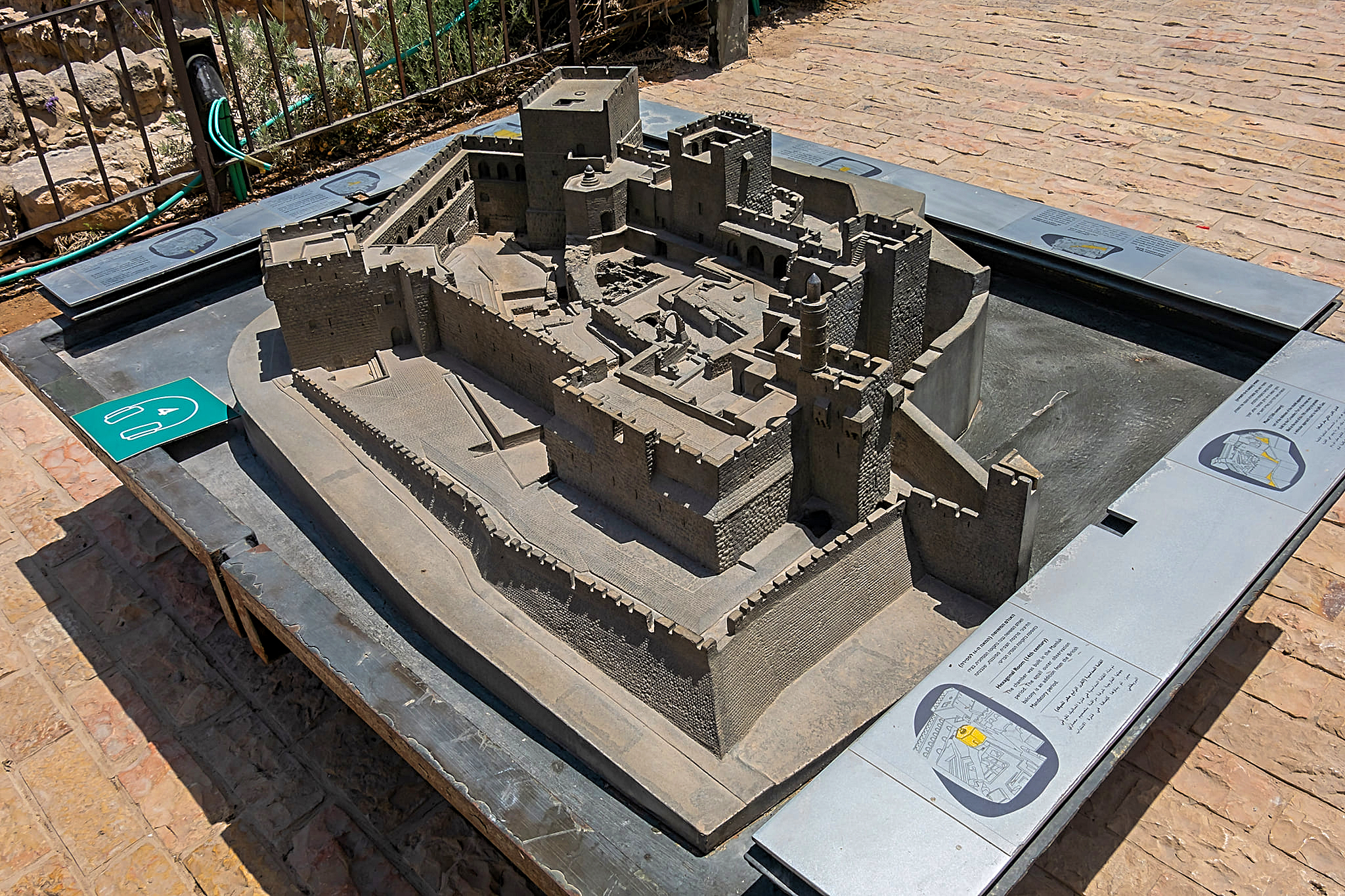
The 1:100 scale aluminum model depicts the structure of the Jerusalem citadel including the minaret which is called the “Tower of David. Photo credit: © Dmitry Mishin
9. Mount of Olives
The Mount of Olives is a two-mile-long ridge with three summits facing the Old City across the Kidron Valley. This holy mount is known to most Christians as the site where Jesus wept over Jerusalem (Flevit super illam); where he taught his disciples (including the Olivet Discourse); as the site of his betrayal and arrest in the Garden of Gethsemane and where Jesus ascended to heaven in Acts 1:9-12.
In the Old Testament, the mountain is referred to when David fled from Absalom (II Samuel 15:30) and in many other references. The mount has been a sacred Jewish burial ground since antiquity and verses in Zachariah refer to it as the place where the resurrection of the dead will begin after the Messiah has arrived. For this reason, many Jews wish to be buried here and it is the final resting place of many famous Jewish figures including Chaim ibn Attar.
Today the mount is home to several landmarks; the Arab neighborhood of At-Tur stands on the mountain’s summit and to the north is the Mount Scopus campus of the Hebrew University of Jerusalem and Brigham Young University Jerusalem Center.
On the Mount of Olives you can visit the Church of All Nations, with its stunning colorful mosaic on the façade; the Church of Mary Magdalene, a magnificent Russian Orthodox Church with gold onion-domes; Dominus Flevit Church which marks where Jesus wept and the Chapel of the Ascension, a shrine marking where Jesus ascended to heaven 40 days after his resurrection.
The Church of the Pater Noster stands on the site thought to be where Jesus taught the disciples the Lord’s Prayer. Ceramic plaques line the walls bearing the Lord’s Prayer in different languages. Other structures on the Mount of Olives include the Augusta Victoria Hospital; Orson Hyde Memorial Garden; the Seven Arches Hotel and the Garden of Gethsemane.
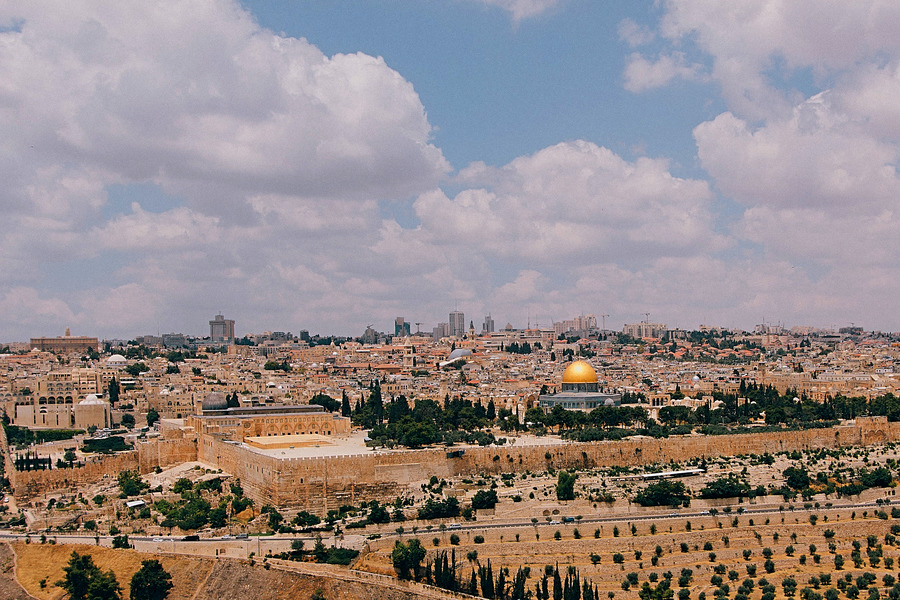
View of the Temple Mount and of Mount Olives Jewish cemetery. Photo by Robert Bye on Unsplash
10. Mount Zion
South of the Armenian Quarter of the Old City is the highest point of ancient Jerusalem, Mount Zion. The mount is mentioned in both the Old and New Testament and the name has become synonymous with the city – the City of Zion. The biblical events believed to have occurred here include the last supper, where Jesus appeared before the high priest for judgment; where the Virgin Mary fell asleep (on the site of the present-day Dormition Abbey), and the site of the ancient Council of Jerusalem (Acts 15:1-29).
During Christ’s lifetime, Mount Zion would have been a well-to-do residential neighborhood within the City Walls. The name “Mount Zion” has been used to refer to a number of locations including Temple Mount. The mount is also the traditional burial place of King David although it was the Crusaders who built the present David’s Tomb which stands on Mount Zion.
Gradually over time, the tomb came to be accepted as the real burial place of David. King David is also a respected figure in the Islamic faith. When the walls of the Old City were built under the Turkish Sulieman the Magnificent in the 16th century the Sultan heard that Kind David’s tomb had been left outside of the walls and so he had the architects of the walls beheaded.
Inside Jaffa Gate, you can see two stone graves said to be those of the architects. Today visitors to Mount Zion can visit King David’s Tomb and above it the Room of the Last Supper. There is also the Chamber of the Holocaust, a small Holocaust museum; the Catholic cemetery where Oskar Schindler is buried (of Schindler’s List fame); Dormition Abbey; and St. Peter in Gallicantu (traditional location of the house of Caiaphas).
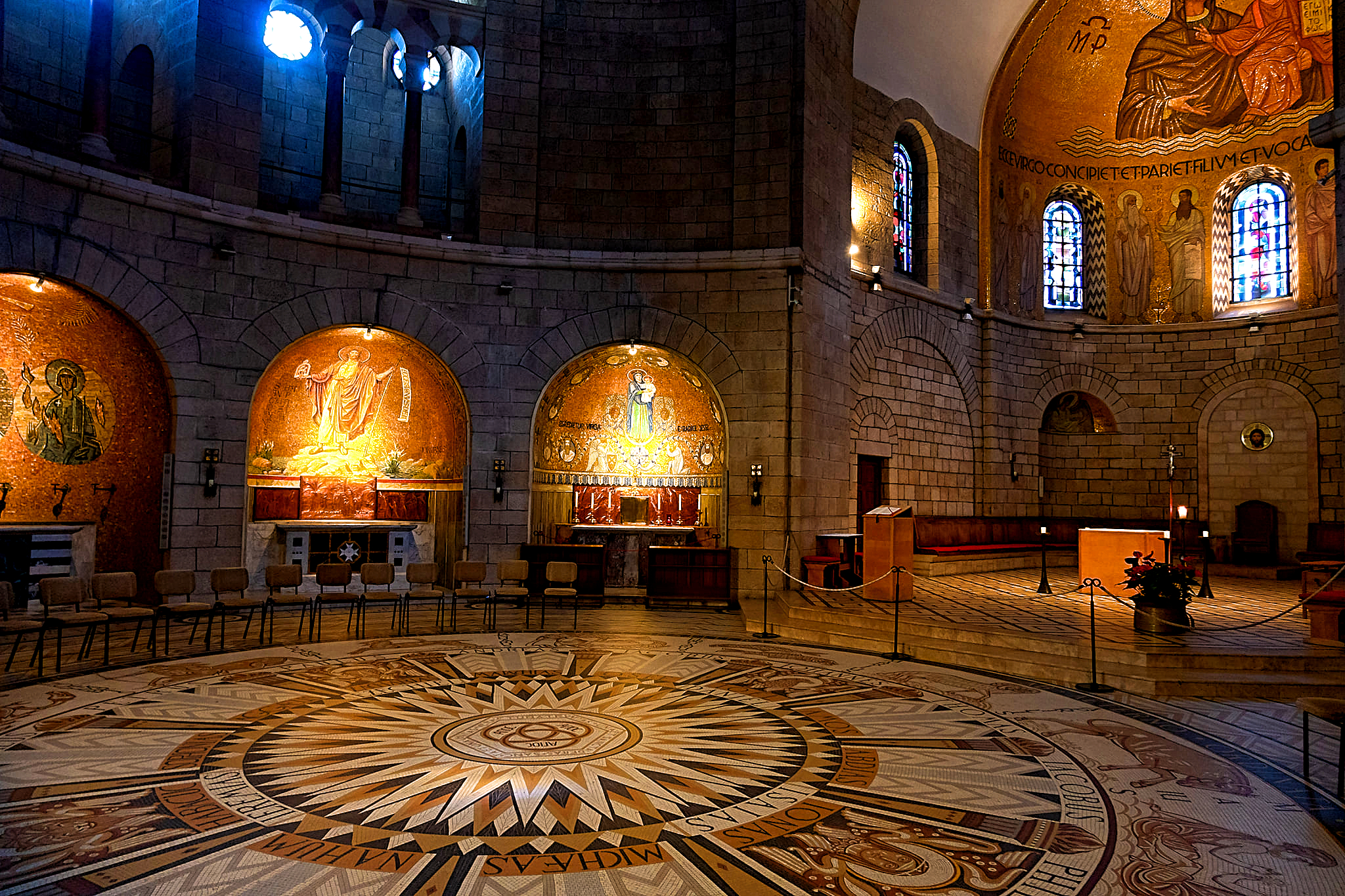
Dormition Abbey, Mount Zion, Jerusalem, Israel. Photo credit: © Dmitry Mishin
11. Mea ShearimOne of Jerusalem’s oldest neighborhoods, Mea Shearim is home to ultra-Orthodox Jews or Haredim. This was the 5th settlement outside of the Old City walls established in 1874. The name means 100 gates or hundredfold and is thought to either come from a biblical verse or the fact that the neighborhood once had 100 gates.
The neighborhood has narrow stone lanes and streets with small courtyards and homes entered through gates in the stone walls that line the streets. On your walk through the neighborhood, you will notice signs requesting “modest dress.” Visitors to this part of the city should respect the local residents by wearing modest clothing.
Women should were tops with sleeves, not show a lot of cleavages and wear skirts below their knees. Men should not wear vests or shorts. During Shabbat (from sundown on Friday to sun up on Saturday) the neighborhood is in darkness. Visitors should also avoid using mobile phones, taking photos, or smoking in the neighborhood. A visit to Mea Shearim will give you an insight into an insular community that lives by the rules of the ancient Torah.
Two Orthodox Jews burying a genizah at the Jewish Cemetery on Mount Olives. Photo by Zoltan Tasi on Unsplash
12. Israel Museum
This comprehensive museum complex is Israel’s national museum. The Israel Museum covers a wide range of historic periods and artwork. In the permanent art galleries, you can see Israeli art, contemporary art, modern art, European art, design, photography, prints, drawings, and architecture, exhibits on world culture, and the Billy Rose Art Garden.
The archaeological section covers discoveries from the Land of Israel, Islamic near Eastern excavations, the development of the alphabet, neighboring cultures, coins, and glass through the ages. A permanent section deals with Jewish art and life including traditional Jewish cultures from around the world, illuminated scripts, and the cycle of the Jewish year.
There is a children’s wing where exhibits are geared towards younger visitors and there are regular activities for families (especially during Israeli school holidays). A highlight of the museum is the Shrine of the Book; a uniquely shaped building housing the Dead Sea Scrolls and the Aleppo Codex. There is also an impressive scale model of Jerusalem during the Second Temple Era. This is the ultimate Israeli museum for art and history so if you visit one museum in Israel it should be this one.
Kurdish hat belonging to Jews from Kurdistan, now in the Israel Museum in Jerusalem. Photo by Levi Meir Clancy on Unsplash
13. Kidron Valley
This valley lies between the Mount of Olives and the walls of the Old City. Here you can see ancient tombs and olive trees. The valley was once a deep ravine and defensive border for the original City of David. King David would have run through here when fleeing Absalom (II Samuel 15:23) and Jesus would have walked here when visiting the village of Bethany and the Garden of Gethsemane.
During the Second Temple period, a large bridge is believed to have spanned the valley connecting the Temple Mount and the Mount of Olives. Three monuments face the Old City walls. The Pillar of Absalom (King David’s rebellious son) is a tall ornate tomb hewn out of the rock face with a pointed roof. The Tomb of the Sons of Hezir has columns supporting a frieze and an inscription identifying this as the tomb of the biblical figure and his sons.
The Tomb of Zachariah is next in line, it is a free-standing cube decorated with columns and topped with a pyramid-shaped roof. The Tomb of the Virgin Mary is at the foot of the Mount of Olive and is thought to be the burial place of Jesus’ mother. Today a church marks the site where rock-cut underground caves have been excavated. Visitors can descend 47 steps into the tomb and see an excavated sarcophagus uncovered here.
Kidron Valley, Jerusalem, Israel. Photo credit: © Shutterstock
14. City of David
Jerusalem as a whole is often referred to as the “City of David” but actually the original City of King David was located outside the Old City walls opposite the Dung Gate overlooking the Kidron Valley. Excavations have uncovered remains of the city along a ridge called the Ophel. The excavated buildings date back to the Jebusite and Israelite eras of the 10th century BC and although as yet no discovery has tied the ruins with King David the site has been named the City of David.
Visitors must take a guided tour of the site. The visit includes a 3D presentation; a view of the excavated City of David from an Observation Deck; a visit to the royal compound of First Temple Jerusalem (Area G); Warren’s Shaft (an underground tunnel connecting the citadel to the Gihon water source) and a visit to the Siloam Pool of the Second Temple Era. Tours leave from the Visitors Center at the entrance to the City of David. There are three different themed tours titled Ascend to Zion, Family Tours of Biblical Jerusalem, and Enchanted Jerusalem.
15. Haas Promenade
Haas promenade connects the neighborhoods of East Talpiot and Talpiot. The promenade continues on to connect with the Sherover and Goldman Promenades making one continuous public park area. The promenade looks down on the Old City and you can see as far as the Dead Sea. It is thought to be the biblical site where Abraham was shown Mount Moriah where he was to sacrifice his son Isaac.
Although the site has seen historic events unfold it is famed for the view more than anything else. From here you can see the Dome of the Rock taking center stage, the walls of the Old City, Arab villages, olive groves, pine trees, and the Hills of Judea in the distance.
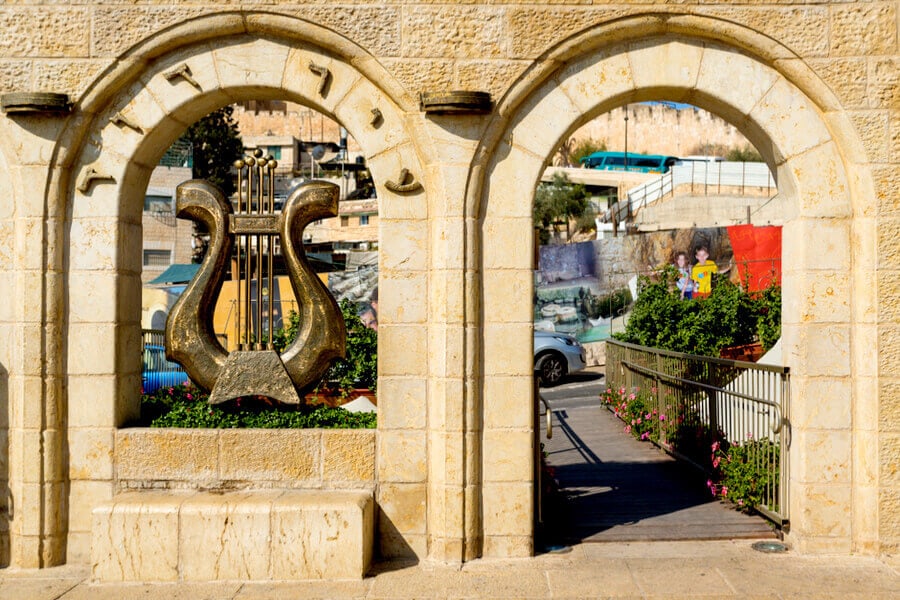
Entrance to City of David, Jerusalem. Photo credit: © Shutterstockto credit: © Shutterstoc
 Login / Register
Login / Register
 Contact Us
Contact Us
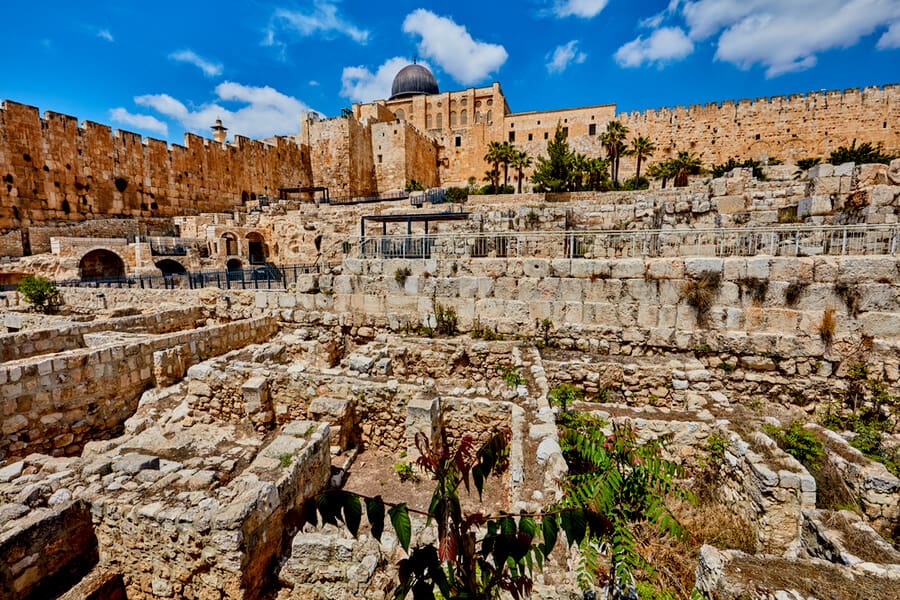
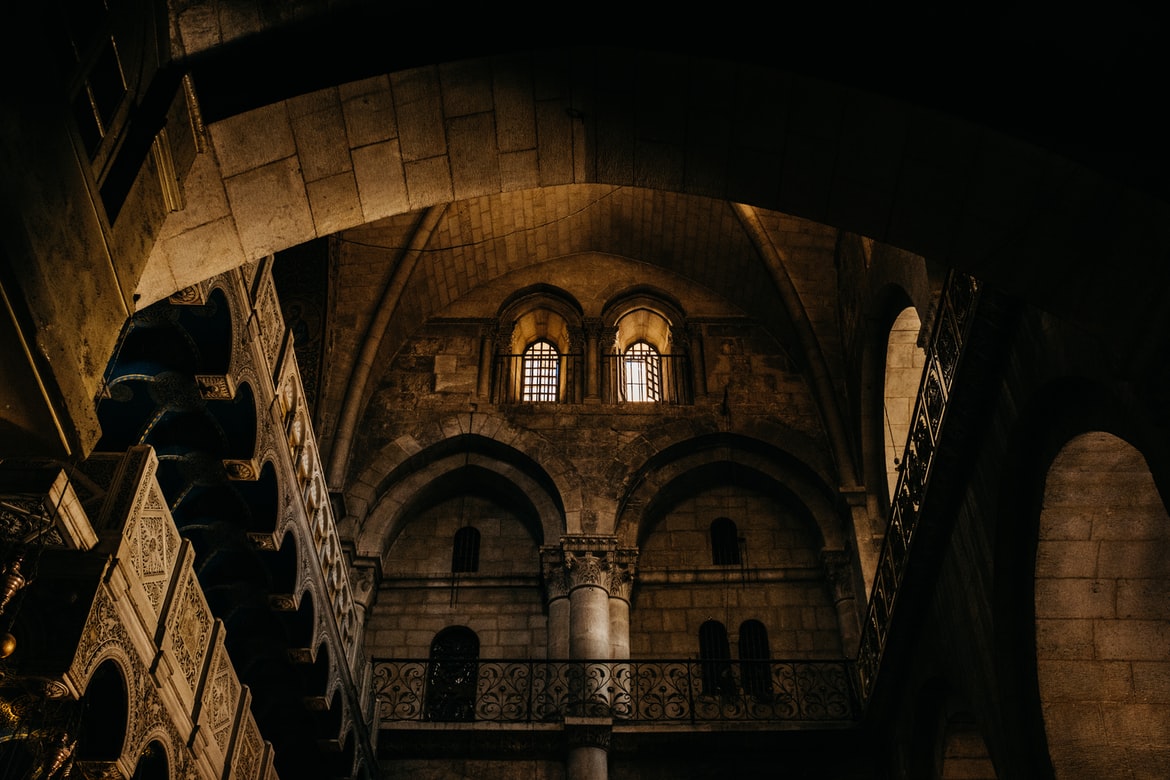
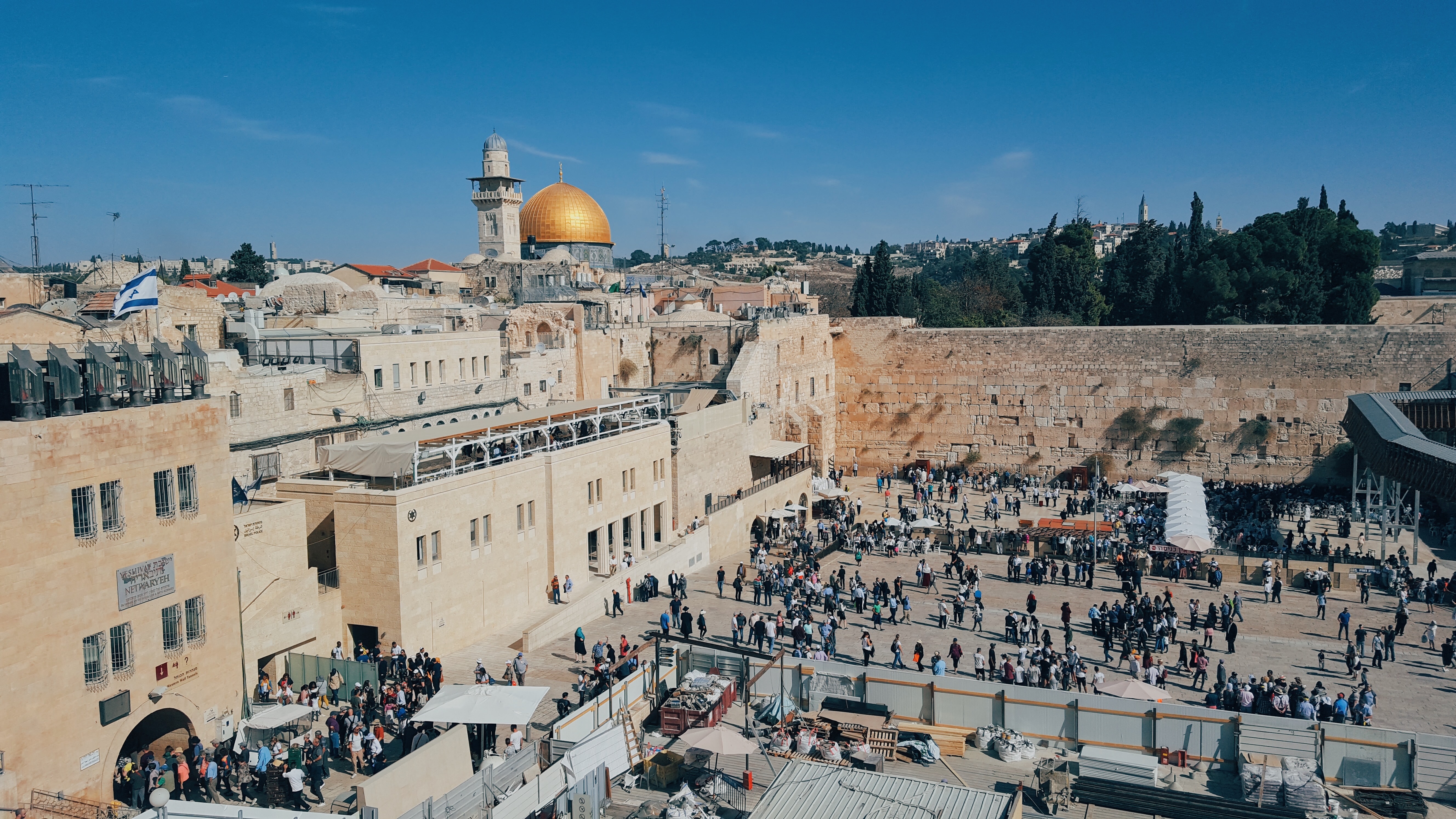
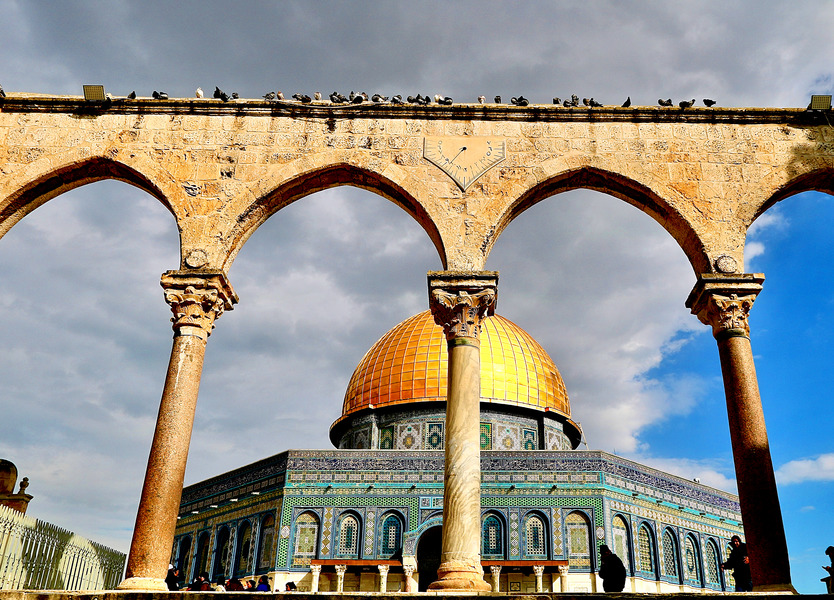
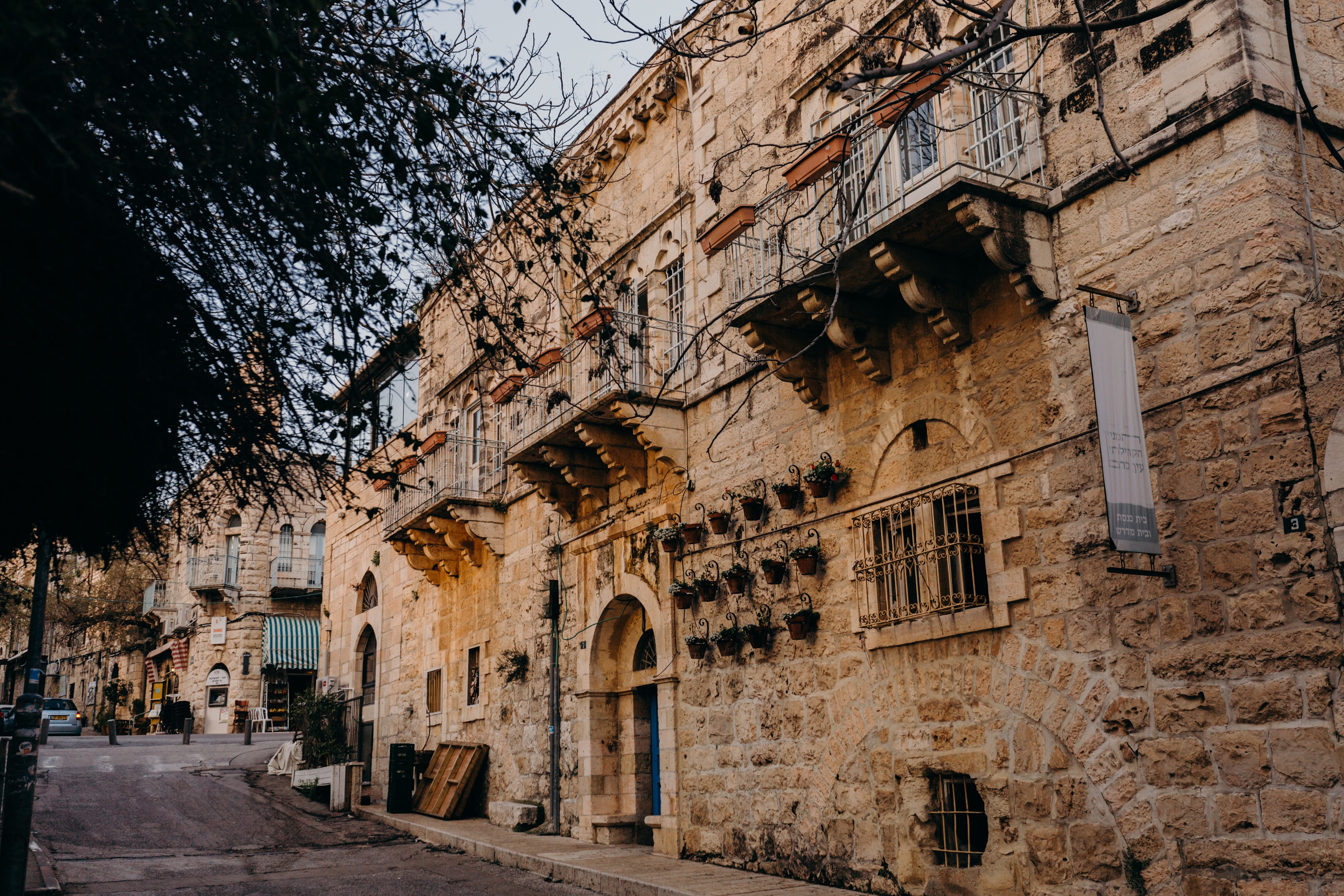
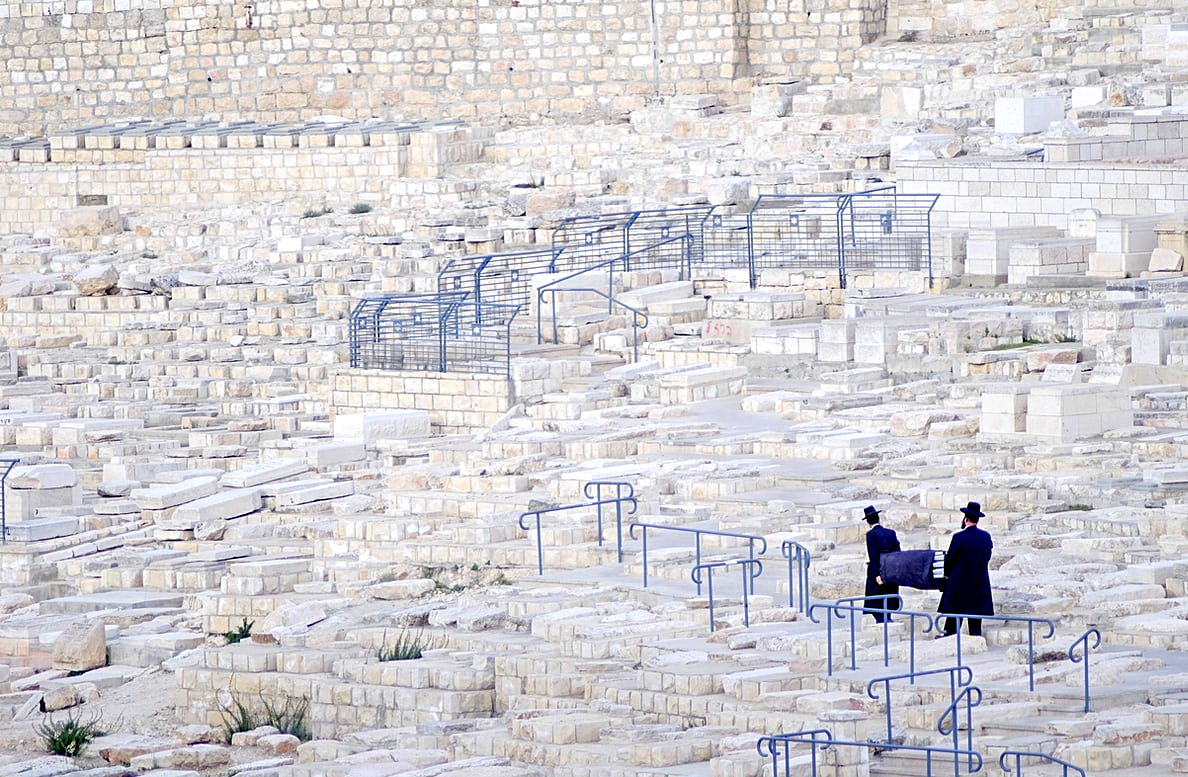
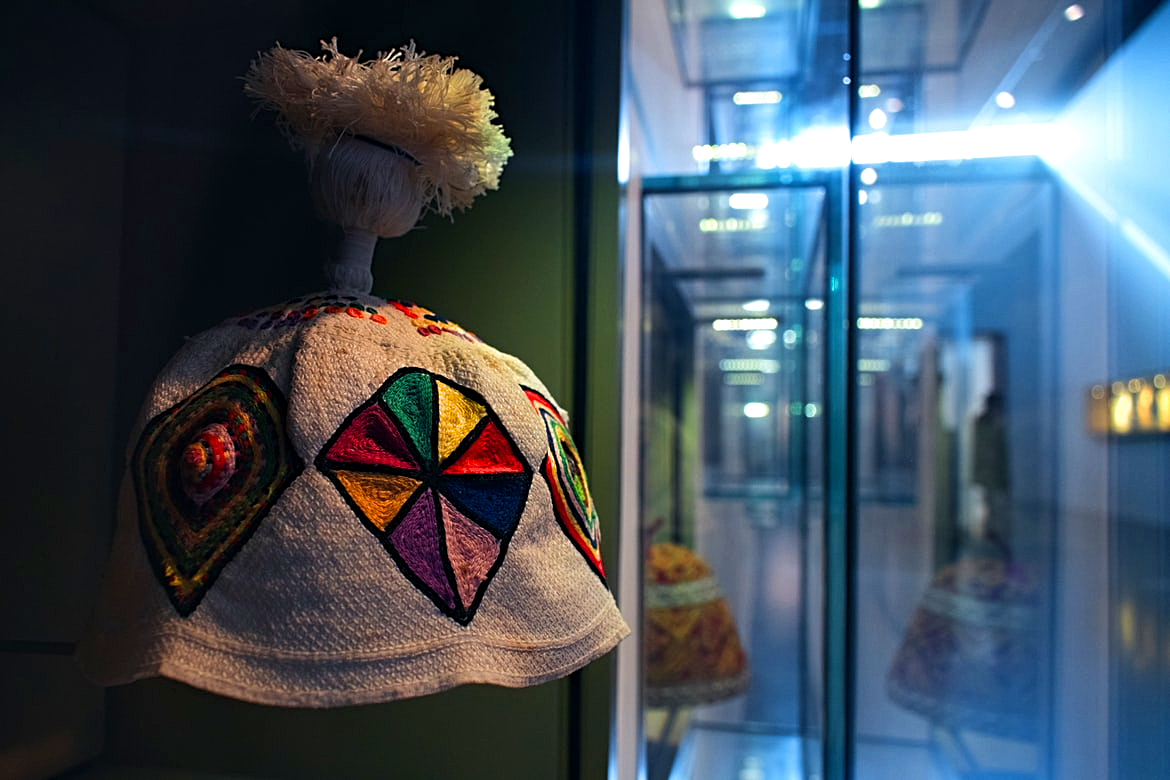
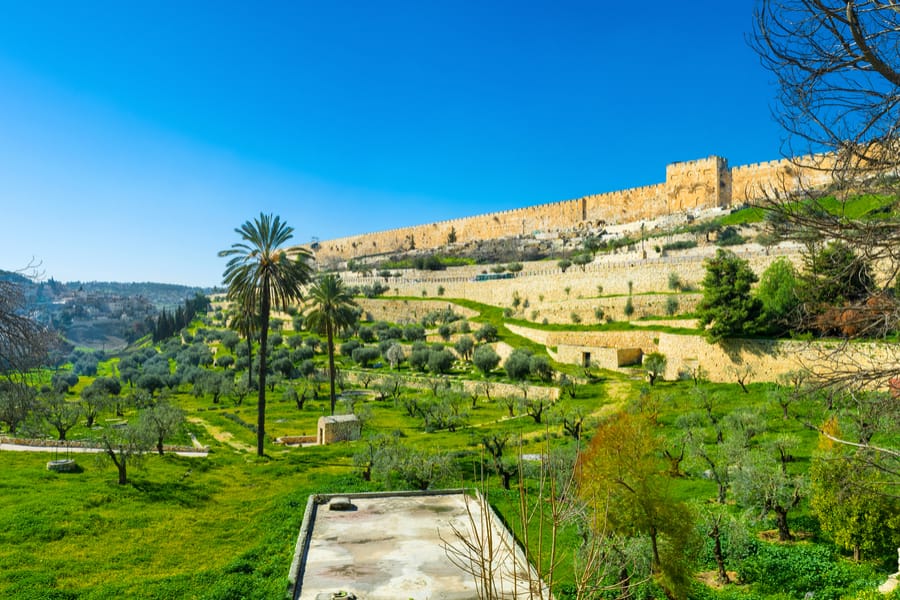
 Certificate of Excellence
Certificate of Excellence Guaranteed Departure
Guaranteed Departure Low Prices Guaranteed
Low Prices Guaranteed 24/7 Support
24/7 Support




